Crusty Pan Pizza
by amy – October 1, 2015 in Cooking
One day I felt like pizza.
Do you ever get that craving? But I didn’t want to make just any old pizza. I wanted that Pan Pizza kind like the one I remember from Pizza Hut, the one with a thick, puffy crust with a crunchy, buttery exterior that collapses onto a soft, pillowy interior when you bite into it. This, believe it or not, is a crust you can achieve at home. And you can do it in a cast iron skillet.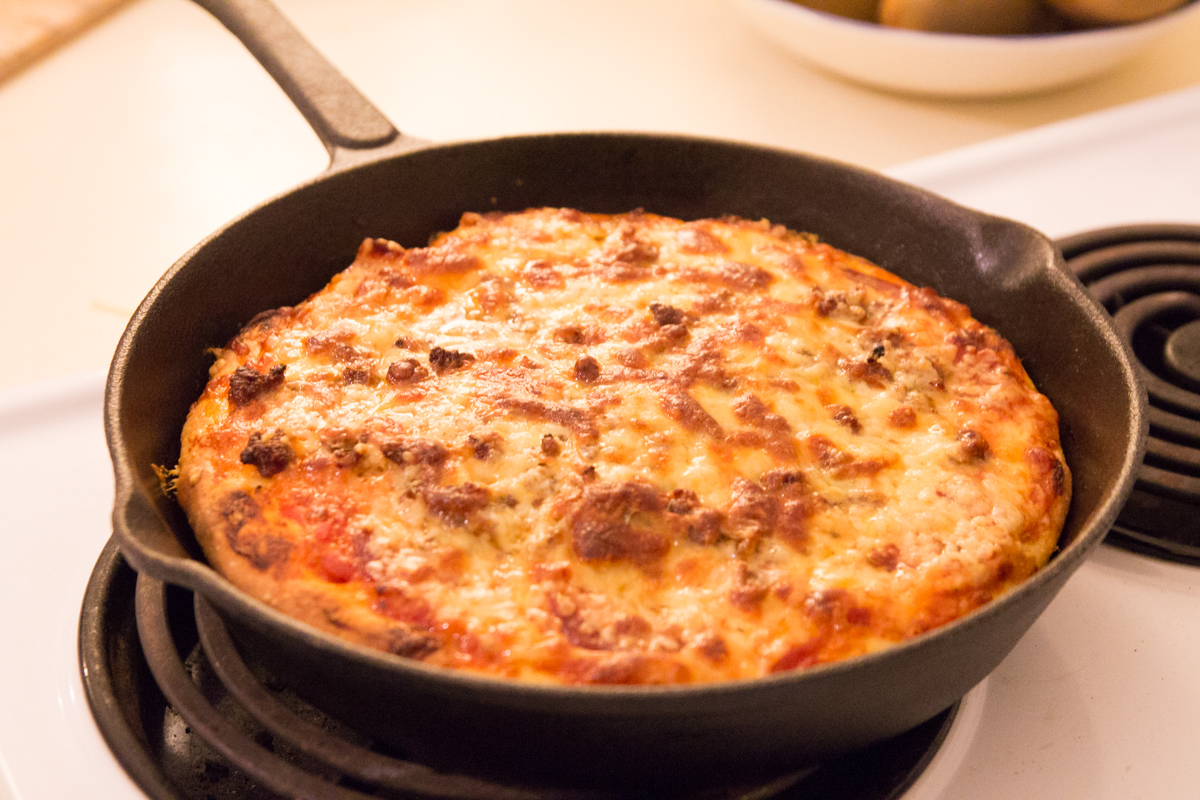
I found the recipe I was looking for at seriouseats.com, which I highly recommend. I don’t feel the need to repeat his recipe here, so go get it if you’d like to try it. Also, you might want to look at the version of this recipe on The Splendid Table, because Lynne has helpfully included the gram measurements for the dough recipe – good for precision if you have a digital scale. Be forewarned that the dough recipe takes 8-24 hours to rise, and then another 2 hours after you’ve stretched it out in the pan. It’s worth the wait, and the upside is it makes 2 pizzas. You can freeze one half of the dough for later.
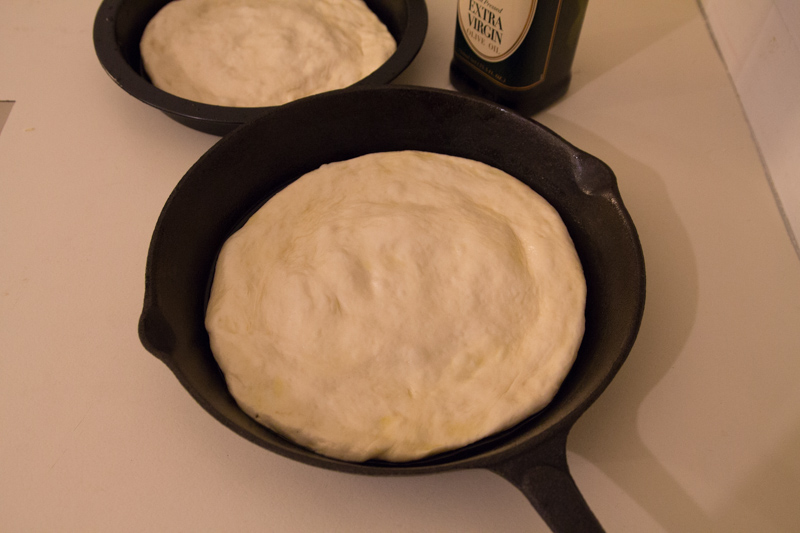
My crust came out pretty great. It wasn’t quite as perfect and holey as his pictures show. My dough didn’t rise as dramatically as predicted (certainly not 4-6 times its size). Half a teaspoon of yeast for 2 1/2 cups of flour seemed slight, but after more reading it seems to be a good ratio. I had no complaints otherwise, and I will be trying it again soon to strive for that perfect crust. I topped my pizza with some good pepperoni, fried sausage, and mozzarella. Delicious! A good meal for a cozy evening, especially if it’s chilly outside.
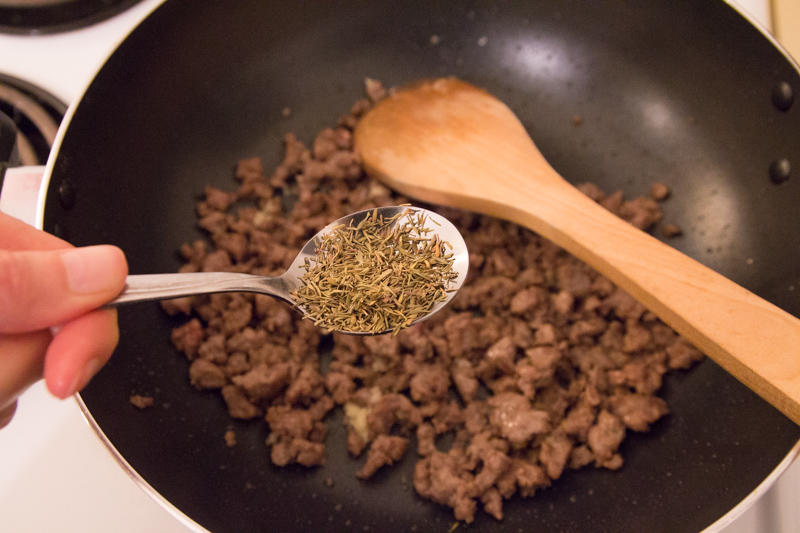
Ground Beef or Sausage Topping
A good topping is made by frying ground beef or raw sausage with garlic and thyme. Here’s my method which I picked up in the past for lasagna. For this pizza, I took 2-3 small sausages out of their casings and started frying them at medium-low heat. The meat will try to clump up immediately, so what I do is take two wooden spoons or spatulas and work at breaking it up for the first few minutes of cooking.
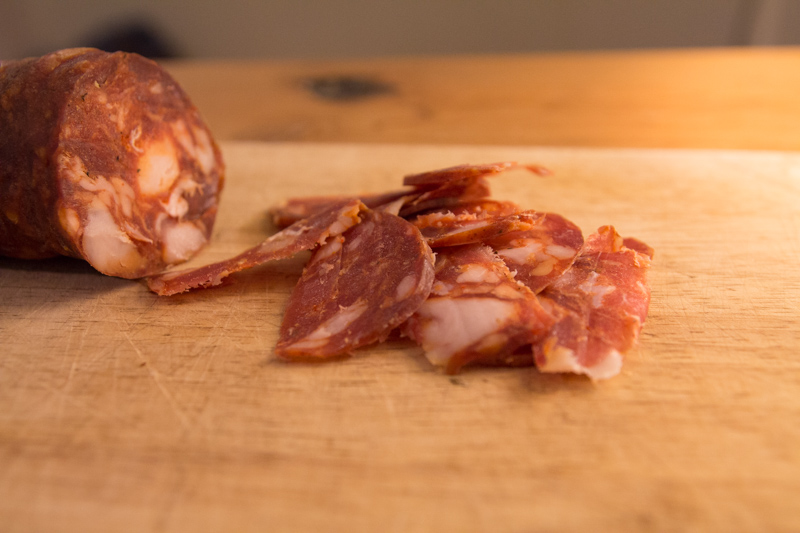 Once the meat is browned and starting to get crispy in its own fat, drain most of the fat off (if there’s a lot), and then add a couple teaspoons of minced garlic. This makes fried beef so good! I always add some salt too, as I feel that plain beef begs for it. Add a good spoonful of thyme. Now you have some fried meat that you can use in so many ways – as part of a pasta sauce, for example. In the picture I haven’t fried the beef until it’s really crispy, but know that there is a linear correlation between deliciousness and crispiness, and it doesn’t hurt to get to the point where the meat is getting more toasted (you know, that fine line between burnt and awesome?
Once the meat is browned and starting to get crispy in its own fat, drain most of the fat off (if there’s a lot), and then add a couple teaspoons of minced garlic. This makes fried beef so good! I always add some salt too, as I feel that plain beef begs for it. Add a good spoonful of thyme. Now you have some fried meat that you can use in so many ways – as part of a pasta sauce, for example. In the picture I haven’t fried the beef until it’s really crispy, but know that there is a linear correlation between deliciousness and crispiness, and it doesn’t hurt to get to the point where the meat is getting more toasted (you know, that fine line between burnt and awesome?
I happened to have pepperoni on hand, so naturally that went on the pizza too.
The Sauce
Here’s my method for making a tasty tomato sauce out of plain tomato puree or what the Italians call passata, which is puree that’s been strained of seeds and skin. Puree is much cheaper to buy than your fancy brand pasta sauce, and it’s easy to spruce it up with onion, garlic and spices. Awhile back I learned the Italian way to start a sauce, and it has stuck with me ever since. Heat up 1-2 tablespoons of olive oil in a pan and add a clove or two of garlic, chopped or unchopped (if unchopped, remember to remove later). Heat the oil slowly and the garlic will flavor the oil without burning. It smells so good. This is the foundation. Now we’re ready to add things. I like adding a diced onion and turning up the heat a little to simmer it, which will soften the onions and evaporate some of the water in the puree to give you a thicker sauce. Then add spices as desired. Salt, pepper, oregano, thyme… tasting is important. If you’re using the sauce for something other than pizza, like pasta, you can add any number of other chopped veggies to your sauce.
Fixing acidity: If your tomato puree tastes especially sour or acidic, add a teaspoon of sugar. It’s amazing how it will erase the acidity. Alternatively, you can dice half a carrot and add that to the oil at the same time you add the onion. The carrot adds sweetness and a nice body to your sauce.
The Eastern Secret: One time I had a really amazing dish in a Greek restaurant. It had a tomato sauce that I have trouble describing. It was so wonderful and soulwarming. At the first spoonful, I was transported to a hearth by a fireplace in an ornate room with thick drapes, where the colors were warm and rich. I saw firy reds and orange, as in a Persian carpet. The secret ingredients in the sauce I tasted were spices like cinnamon, cloves, and allspice. The ones we in the West normally reserve for sweet things. If you add a little of these in moderation to your sauce and taste, you will discover a whole other dimension that is so warm and round and rich. I highly recommend experimenting with your sauce.
But I digress. What were we talking about? Oh, yes. PIZZA!
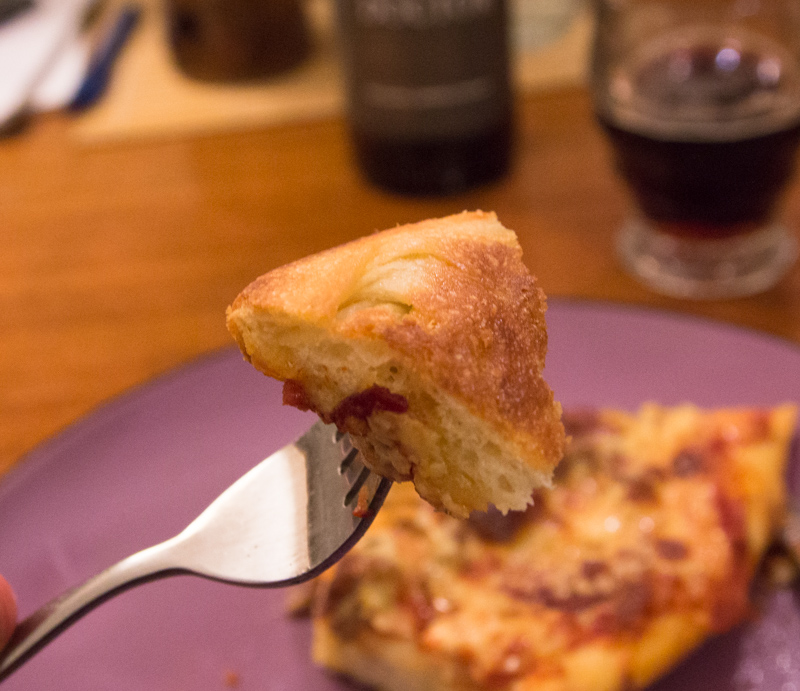
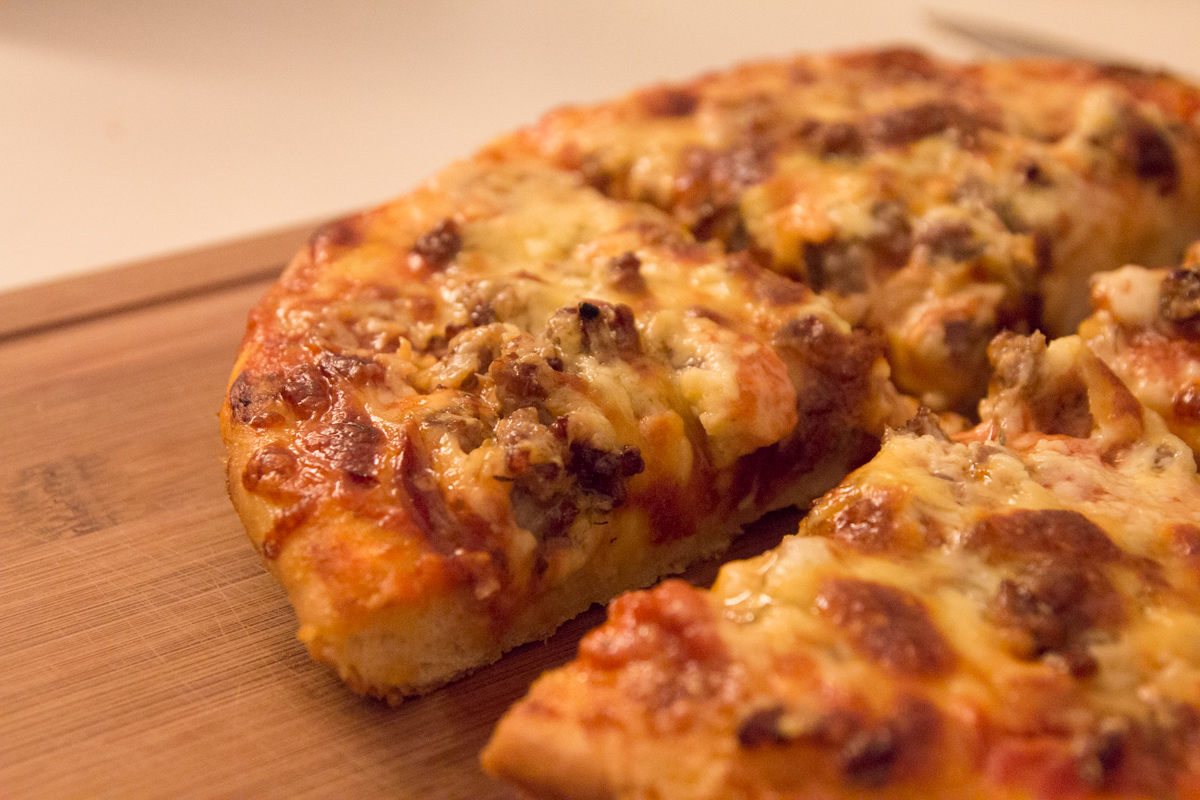
I was quite proud of this crust. See how it came out nice and fried on the bottom? I thank the cast iron skillet. The Serious Eats site has another article where he explains in-depth how to get the perfect crust, starting with how yeast works, and why it’s important to cook the pizza at the highest temperature your oven can go (he recommends 550°F). His pictures are helpful if you need convincing.
Try this pizza, and enjoy!
